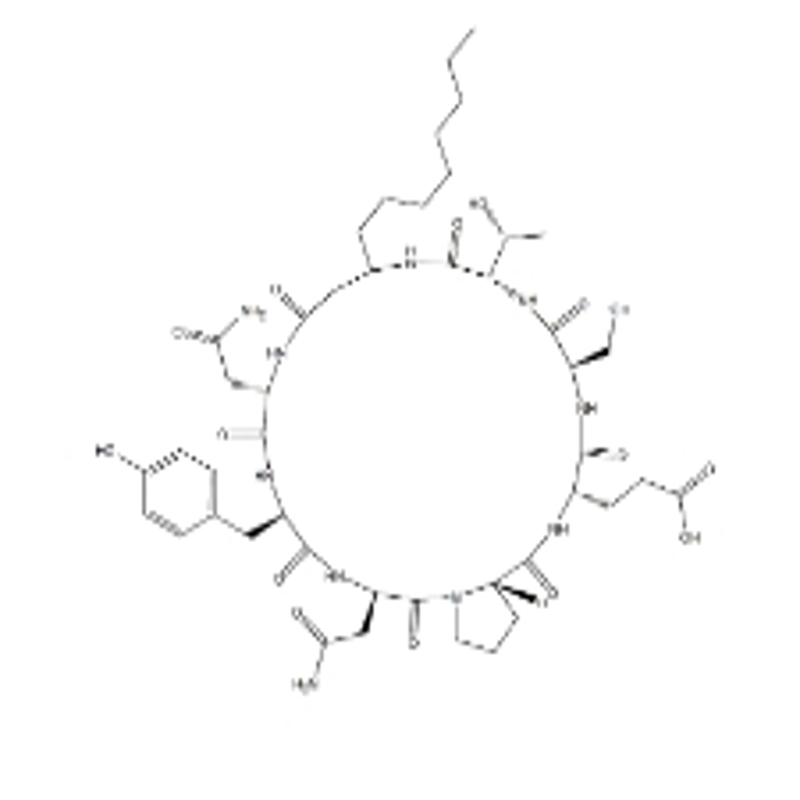-
Categories
-
Pharmaceutical Intermediates
-
Active Pharmaceutical Ingredients
-
Food Additives
- Industrial Coatings
- Agrochemicals
- Dyes and Pigments
- Surfactant
- Flavors and Fragrances
- Chemical Reagents
- Catalyst and Auxiliary
- Natural Products
- Inorganic Chemistry
-
Organic Chemistry
-
Biochemical Engineering
- Analytical Chemistry
-
Cosmetic Ingredient
- Water Treatment Chemical
-
Pharmaceutical Intermediates
Promotion
ECHEMI Mall
Wholesale
Weekly Price
Exhibition
News
-
Trade Service
Editor’s note iNature is China’s largest academic official account.
It is jointly created by the doctoral team of Tsinghua University, Harvard University, Chinese Academy of Sciences and other units.
The iNature Talent Official Account is now launched, focusing on talent recruitment, academic progress, scientific research information, interested parties can Long press or scan the QR code below to follow us
.
iNature Streptococcus suis is a ubiquitous bacterial colonization in pigs.
It has recently expanded its host range to humans, leading to a surge in fatal human infections worldwide and three major outbreaks since 1998
.
In previous studies, due to the limited number and geographic diversity of Streptococcus suis strains derived from human infections, the evolution of the Streptococcus suis population and its spread and pathogenesis in the population have not been fully understood
.
On June 17, 2021, Li Jinquan of Huazhong Agricultural University and Feng Ye of Zhejiang University jointly published a research paper entitled "The global emergence of a novel Streptococcus suis clade associated with human infections" in EMBO Molecular Medicine (IF=12.
13) The study sequenced 366 human and swine isolates of Streptococcus suis from 2005 to 2016, and conducted a large-scale phylogenetic analysis of 1,634 isolates from 14 countries over 36 years
.
This study demonstrates the formation of a new human-associated clade (HAC) diversified from pig S.
suis isolates
.
The systematic geographical analysis determined that Europe was the origin of HAC, which coincided with the export of European pig breeds from the 1960s to the 1970s
.
HAC consists of three sublines, including several healthy pig isolates that showed high virulence in experimental infections, indicating that healthy pig carriers are a potential source of human infection
.
The new HAC-specific genes have been identified as promising markers for pathogen detection and surveillance
.
The discovery of the human-related streptococcus suis clade in this study provides insights into the evolution of this emerging human pathogen and expands the understanding of the global Streptococcus suis epidemic
.
This research has attracted great attention in the field
.
Nature published on July 7, 2021 selected the results as Research Highlights and followed up the report, further affirming the value and significance of the research work from the perspective of "One Health"
.
Streptococcus suis is an important zoonotic pathogen, which can be transmitted through pigs, and food-borne infection is one of the important ways of its transmission
.
Since 1998, there have been three large-scale crowd outbreaks in China
.
In recent years, the global number of human infections with Streptococcus suis has been increasing, which has caused a serious public health problem
.
In June 2019, human infection with swine streptococcus was listed as one of the public health emergencies that require attention in mainland China
.
In previous studies, due to the limited number and geographic diversity of Streptococcus suis strains derived from human infections, the evolution of the Streptococcus suis population and its spread and pathogenesis in the population have not been fully understood
.
In order to track the evolution and cross-species transmission mechanism of Streptococcus suis, the study analyzed 1,634 Streptococcus suis genomes from pigs and humans from 14 countries over 36 years
.
Through population genome analysis, three specific branches of Streptococcus suis were revealed, namely, the human-associated clade (HAC), the healthy-pigClade (HPC), and the diseased-pigClade (DPC).
, Diseased-pig Clade)
.
The animal model verifies that the HAC strain is more pathogenic
.
It is worth emphasizing that even HAC strains isolated from healthy pigs are significantly more pathogenic than HPC strains, which indicates that healthy live pigs or pork products can also carry highly pathogenic strains and become potential mediators of foodborne transmission.
Or carrier
.
Using the methods of phylogenetic biogeography and molecular clock analysis to trace the origin of HAC strains to Europe in the 1960s or 1970s, it is believed that the European-centric pig trade may be one of the important reasons for the spread of Streptococcus suis
.
In addition, the study also found that the current HAC strains have formed three parallel evolutionary epidemiological lineages (I, II, and III) in Asia, among which lineage III has been found in many provinces in China, which requires our attention and continuous monitoring
.
Dr.
Dong Xingxing from the School of Food Science and Technology of Huazhong Agricultural University and researcher Chao Yanjie from the Shanghai Pasteur Institute are the co-first authors of this paper
.
Li Jinquan of Huazhong Agricultural University and Feng Ye of Zhejiang University are co-corresponding authors
.
This research was funded by the National Key Research and Development Program, the National Natural Science Foundation of China, the Hubei Provincial Science and Technology Innovation Special Fund, and the Independent Innovation Fund of Huazhong Agricultural University
.
Reference news: https:// Nature Highlights link: https:// Li Jinquan, Huazhong Agricultural University cross Researcher of the Academy of Sciences, PhD supervisor
.
Visiting researcher at Rockefeller University, USA
.
He has long been committed to the study of the molecular mechanism of food-borne pathogens, the study of bacteriophage prevention and control mechanisms, and the discovery of bacteriophage dark matter
.
Take the lead in establishing Salmonella, Escherichia coli, Vibrio parahaemolyticus, Enterobacter sakazakii, Clostridium perfringens, Aeromonas and other pathogenic phage libraries, and take the lead in realizing the industrialized production of bacteriophages in China, which is expected to be used in the food production chain , Including the replacement of antibacterial substances in feed and breeding or food safety
.
High-throughput screening of new green antibacterial molecules such as phage lyase, phage peptide and polysaccharide depolymerase
.
Use genetic engineering technology to construct low pathogenic phage production chassis cells
.
He has published more than 40 papers in journals such as China Food Journal, Food Science, EMBO Molecular Medicine, PLoS Pathogens, The Journal of Infectious Diseases, Food Control, International Journal of Food Microbiology, Virulence, Infection and Immunity, and has obtained more than 10 authorized patents
.
Presided over 3 National Natural Science Foundation of China, 1 China-US Cooperation Special Project of Hubei Province, and 1 Hubei Self-Science Foundation
.







